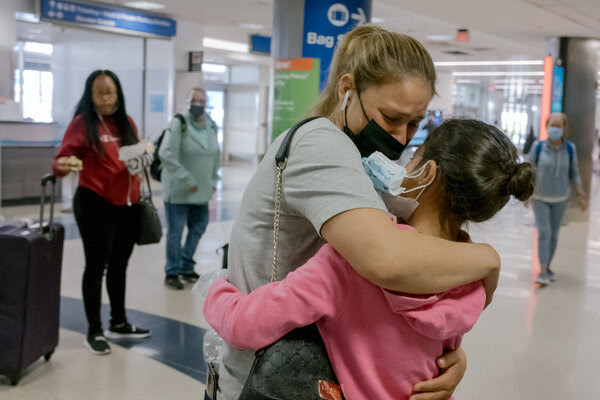|
By Jill Cowan |
Good morning. |
Want to start a lively — and possibly tense — conversation among Californians? Say something about how everyone’s leaving the state. You might hear about exhaustion from fleeing fire after fire, or frustration with high taxes and business regulations. |
If you’re talking to Caitlyn Jenner, the former Olympian who is vying to replace Gov. Gavin Newsom in a recall election, you might hear about a fellow private plane owner “packing up his hangar” because he can no longer bear to see homeless people. |
Inevitably, someone will talk about California’s astronomical housing costs: Do you know how much house you could get in Idaho for what you’re paying in Los Angeles? Can you imagine having a yard? And yet, for all the supposed downsides of living here, the price of a home seems only to ever be going up and up. |
In recent weeks, new data about California’s population has at once confirmed and complicated those narratives. |
First there came the news that while California did grow over the past decade, it didn’t grow fast enough according to the 2020 census to prevent the state from losing a seat in Congress for the first time. Then, as my colleague Shawn Hubler reported on Friday, the state released its own population estimates, which showed that for the first time in more than a century, California actually lost people last year. |
The decline was small by share of the state’s nearly 40 million residents — just 0.46 percent — but in raw numbers, that is 182,083 people, or two Santa Barbaras, as Shawn noted. |
Both of those changes were major reversals for a state that has, since the Gold Rush, been defined by lots of people moving here from around the world. Neither was totally surprising, though. In recent years, California’s population growth has slowed to its lowest recorded rates since 1900. |
Much of the slowdown is the result of forces that have reshaped the United States more broadly, like a declining birthrate and the Trump administration’s policies discouraging or limiting immigration. |
|
Demographers say that it was probably the coronavirus that tipped the state into population decline — and that once the pandemic has passed, there will be a rebound. |
Some 62,270 people have died of Covid-19 in California. Immigration policies that were already restrictive became even more so amid global lockdowns, resulting in what state officials estimated was a loss of 100,000 residents and roughly 53,000 fewer international students. |
To be sure, migration to other states is a significant part of the story, as well. But as an analysis of census data by the Public Policy Institute of California found, the people who headed for another state largely haven’t been the wealthy, educated tech workers whose departures for Miami or Austin have been the cause of much hand-wringing. |
Rather, the people moving into California tend to be more educated and wealthier than the people leaving, according to the analysis: From 2015 to 2019, California gained 74,500 working-age adults with a bachelor’s degree or more — and lost 465,500 working-age adults with less than a bachelor’s degree. Over the past decade, California actually gained almost 114,000 high-income (defined as making more than $138,750 a year) working-age adults. |
And while some former Californians have loudly proclaimed that they’re taking their families and dollars elsewhere out of distaste for the state’s liberal politics, almost half of the adults who left California in the 2010s said they left primarily for jobs, and nearly a quarter said their primary reason for leaving was housing. |
Of course, a combination of many factors influences any given family’s decisions. And the net losses to other states should serve as a warning, experts say. |
But determining what kind of action these signals should prompt is, as always, the challenge. |
Which raises the eternal — if increasingly urgent — question: If California’s population is contracting because thousands of people can’t afford to live here, then what kind of communities will be left? Who is California for? |
For more: |
|
Here’s what else to know today |
|
|
And finally … |
|
The house, according to The San Francisco Chronicle, is a low-slung wooden cottage on a hilltop at the southern rim of Noe Valley with “P.L.” and “D.M.” scratched into the concrete. |
For years, those initials were the only sign that the house played a key role in L.G.B.T.Q. history: It was the longtime home of Phyllis Lyon and Del Martin, the first same-sex couple to legally marry in California, and an integral gathering place for lesbian rights organizers. |
Last week, though, the San Francisco board of supervisors decided it would officially become a historic landmark. Mayor London Breed said she planned to sign the measure after it was reviewed again this week. |
“Phyllis Lyon and Del Martin were true champions of L.G.B.T.Q. rights, and San Francisco was incredibly lucky to have their leadership and activism,” she said in a statement. |




No comments:
Post a Comment